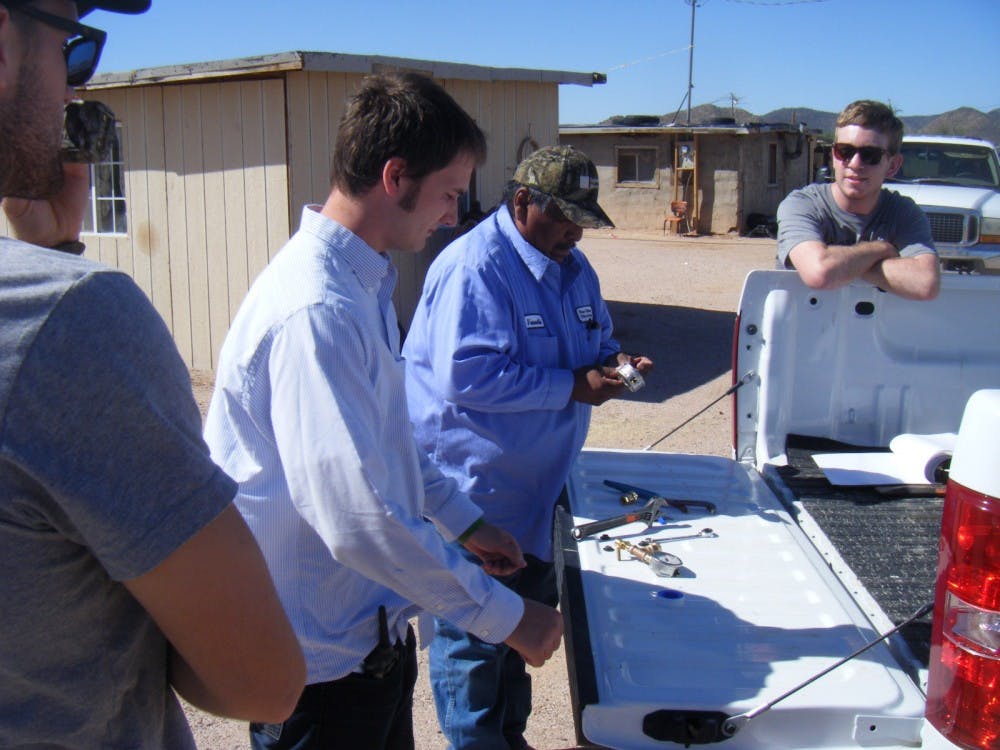Jacob Fuhrer |
When five UP senior engineering students cracked open a fire hydrant in Arizona's Sonoran Desert, there was no fire in sight. Rather, the students were helping the Tohono O’odham Nation, a Native American tribe, take pressure readings from the town’s water supply.
Senior Mitchell Boyd was one of the five team members studying and suggesting improvements to the tribe’s ailing water supply system as part of a senior design capstone course.
“We’ve been given the opportunity to do some of that preliminary work for them,” he said.
Unlike some capstone projects, the trip was a hands-on learning experience for Boyd and his classmates ‒ Riley Walsh, James Oliver, Jared Johnson and Christian French ‒ who had all prepared for the project beginning in June.
“I really think this trip is unique and different from the other senior design projects,” Walsh said.
Boyd says the goal was to examine the water systems of two small towns and suggest locations for interconnection points that will help reduce operation and maintenance costs for the Tohono O’odham tribe. The tribe currently operates the existing network.
To do this, the team measured the system’s elevation and pressure readings to pinpoint where improvements were needed.
The students opened a fire hydrant with the help of the Tohono O’odham Utility Authority to measure the decrease in water pressure that caused. This helped them suggest improvements.
According to Walsh, the trip was a success.
“We did exactly what we needed to do,” he said.
With the raw data they collected, the team used computer modeling software to locate ideal interconnection points for the system.
Walsh says with preliminary modeling work completed, the two towns are a step closer to sharing a single system and saving on maintenance and operations costs.
Although this first step has been taken, there is no set date for the improvements to be made. It will be up to the Tohono O’odham Nation to set aside money to modernize the system
But the project has the potential to receive funding soon. Mark Kennedy, a professor of civil engineering at UP, says a student project from last year was recently submitted to the Environmental Protection Agency for funding approval.
For this year’s students, however, the work isn’t done. Walsh says he and his team will be calibrating the computer models to ensure accuracy. Next semester they will focus on alternative locations for connection interties if the proposed suggestions prove difficult to implement.
When all is finished, the research will be consolidated and given to the tribe.
“We end up providing a government grade report, our design, and we’ll send them a PowerPoint presentation that we do usually on Founder’s Day,” Kennedy said.
Boyd says UP gave him the necessary tools to be successful with the project.
“College will never be able to fully prepare you for the work world,” he said. “But as far as providing the foundation, it definitely has.”
Jacob Fuhrer is a reporter for The Beacon. He can be reached at fuhrer17@up.edu.








